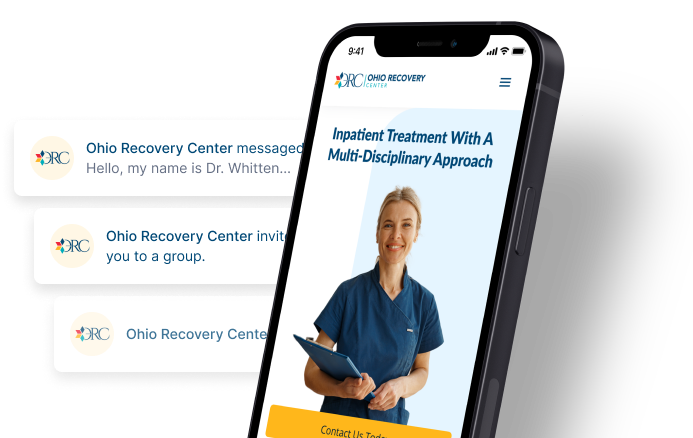Understanding Opioid Prescribing Guidelines In Ohio

Medically Reviewed By: Manish Mishra, MBBS
Many Ohioans take prescription opioids to treat their acute or chronic pain. These medications pose a high risk of misuse, addiction, and overdose. To reduce these risks, Ohio healthcare providers must follow special guidelines when prescribing opioids.

Opioid analgesics (also called “opioids” or “opiates”) are powerful pain medications. While they’re very effective, they pose a high risk of misuse, addiction, and drug overdose.
To ensure patient safety, the Ohio Department of Health has established guidelines for the prescribing of opioid medications.
Ohio’s opioid prescribing guidelines were designed to reduce prescription drug abuse, improve public health, and help end the opioid epidemic.
These guidelines vary depending on whether the patient has acute pain or chronic pain, and the state also has special guidelines for the use of opioids in emergency care settings.
Guidelines For The Treatment Of Acute Pain
Acute pain is defined as pain that comes on quickly and fades over time. It typically lasts for less than six weeks.
Prescribing Time Limits
When treating acute pain, Ohio healthcare providers may prescribe no more than seven days of opioids for adults and no more than five days of opioids for minors (after obtaining written consent from a parent or guardian).
If they want to exceed these limits, they must document a specific reason in the patient’s medical record.
Dose Limits
Prescribers must also stay within certain dose limits.
The total morphine equivalent dose (MED) of the opioid prescription may not exceed an average of 30 MED per day (except when the prescriber is treating certain medical conditions specified in the rules).
MED represents the strength of an opioid dose relative to morphine, the first opioid discovered.
Exceptions & Recommendations
Prescribers may ignore these limits when prescribing opioids for cancer, palliative care, end-of-life care, or medication-assisted treatment (MAT) for opioid addiction.
Other recommendations for using opioid therapy to treat acute pain include:
- choosing the least potent opioid to effectively treat pain
- prescribing the minimum quantity needed with no refills
- using caution when prescribing opioids to patients who use central nervous system depressants (such as alcohol or benzodiazepines) due to an increased risk of overdose
OARRS
Finally, all prescribers must include a diagnosis or procedure code on each prescription, which must be entered into the Ohio Automated RX Reporting System (OARRS).
OARRS is a prescription monitoring program that tracks the dispensing of controlled substances. It helps prescribers and pharmacists understand each patient’s controlled substance prescription history.
Guidelines For The Treatment Of Chronic Pain
Chronic pain is defined as pain that lasts a long time, usually 12 weeks or more. In general, patients with chronic pain require higher daily doses of opioids than patients with acute pain. As a result, they face a higher risk of addiction and overdose.
Ohio healthcare providers must explain these risks before prescribing opioids for chronic pain. They must also offer non-opioid treatments when appropriate.
Unlike the guidelines for acute pain, the guidelines for chronic pain do not limit the number of opioids that can be prescribed.
However, they do establish checkpoints at which the prescriber must schedule a follow-up appointment to reevaluate the patient’s treatment plan and assess the safety of continued opioid use. There are three checkpoints:
First Checkpoint
The first checkpoint occurs when the morphine equivalent dose (MED) reaches 50 per day. According to the Centers for Disease Control and Prevention (CDC), this MED doubles the patient’s risk of opioid overdose death. At this checkpoint, the prescriber must:
- reassess the underlying condition causing the patient’s pain
- assess the patient’s functioning
- check for signs of opioid misuse (also called opioid abuse)
- consider consulting a pain management specialist
- obtain written informed consent
Second Checkpoint
The second checkpoint occurs when the MED reaches 80 per day. At this point, the prescriber must:
- check for signs of opioid misuse
- consult a pain management specialist
- obtain a written pain management agreement
- consider prescribing naloxone, a medication that can quickly reverse an opioid overdose.
Third Checkpoint
The third checkpoint occurs when the MED reaches 120 per day. Patients taking this MED face a very high risk of overdose. According to CDC guidelines, an MED of 90 or more per day increases the overdose risk tenfold.
At this point, the prescriber must regularly consult a pain management specialist. Dentists must consult one of these specialists when prescribing more than 100 MEDs per day. Also, dentists may only use opioids to treat chronic pain when they have received specific training and when treating a long-term condition such as temporomandibular joint (TMJ) dysfunction.
Guidelines For Emergency Care Settings
In April 2012, the Ohio Governor’s Cabinet Opiate Action Team (GCOAT) released the Emergency and Acute Care Facility Opioid and Other Controlled Substances Prescribing Guidelines.
These guidelines address emergency situations where there is no established patient-doctor relationship. They encourage emergency department clinicians to:
- consult the patient’s routine provider who usually prescribes their opioids
- check the patient’s OARRS report before prescribing opioids
- avoid prescribing long-acting or controlled-release opioids, such as oxycodone ER (OxyContin), fentanyl patches, or methadone
- avoid prescribing more than a three-day supply of opioids (unless absolutely necessary)
- refer the patient to a primary care provider or specialist for continued treatment
If you or someone you love struggles with opioids, please reach out to Ohio Recovery Center. Our inpatient substance abuse treatment programs offer medical detox, mental health counseling, and other evidence-based interventions to help you or your loved one thrive.
- Ohio Department of Mental Health and Addiction Services — Ohio Guidelines for Emergency and Acute Care Facility Opioid and Other Controlled Substances (OOCS) Prescribing https://mha.ohio.gov/static/Portals/0/assets/ResearchersAndMedia/Combating%20Opiate%20Abuse/OPG/Guidelines-ED-Acute-Care.pdf?ver=2018-11-08-134230-293
- Ohio Department of Mental Health and Addiction Services — Ohio Guideline for the Management of Acute Pain Outside of Emergency Departments https://mha.ohio.gov/static/Portals/0/assets/ResearchersAndMedia/Combating%20Opiate%20Abuse/OPG/Guidelines-Acute-Pain-20160119.pdf?ver=2018-11-08-132204-323
- Ohio Department of Mental Health and Addiction Services — NEW LIMITS ON OPIATE PRESCRIPTIONS FOR ACUTE PAIN WILL SAVE LIVES AND FIGHT ADDICTION https://mha.ohio.gov/static/Portals/0/assets/ResearchersAndMedia/Combating%20Opiate%20Abuse/OPG/AcutePrescribingLimits_FINAL.pdf?ver=2018-11-08-124147-910
- Ohio Department of Mental Health and Addiction Services — NEW RULES FOR CHRONIC PAIN PRESCRIPTIONS WILL HELP PATIENTS & PRESCRIBERS WORK TO PREVENT ADDICTION https://mha.ohio.gov/static/Portals/0/assets/ResearchersAndMedia/Combating%20Opiate%20Abuse/Chronic-Rules-Fact-Sheet.pdf?ver=2018-11-29-092812-677

